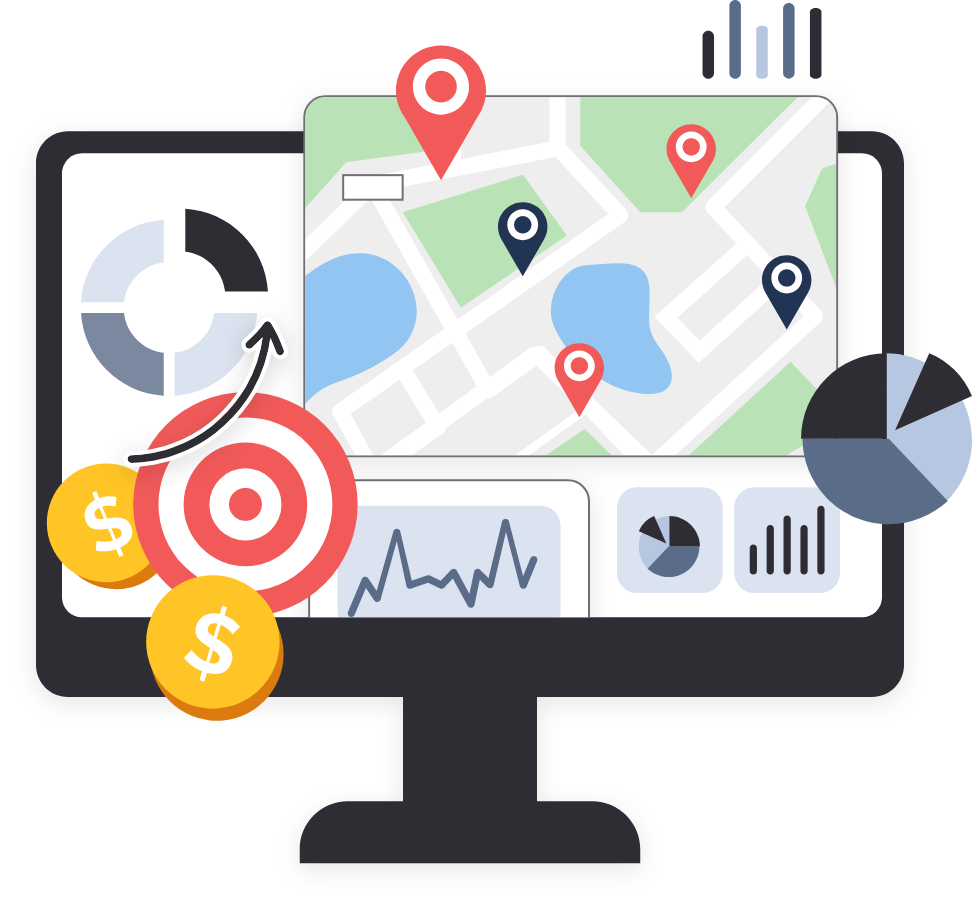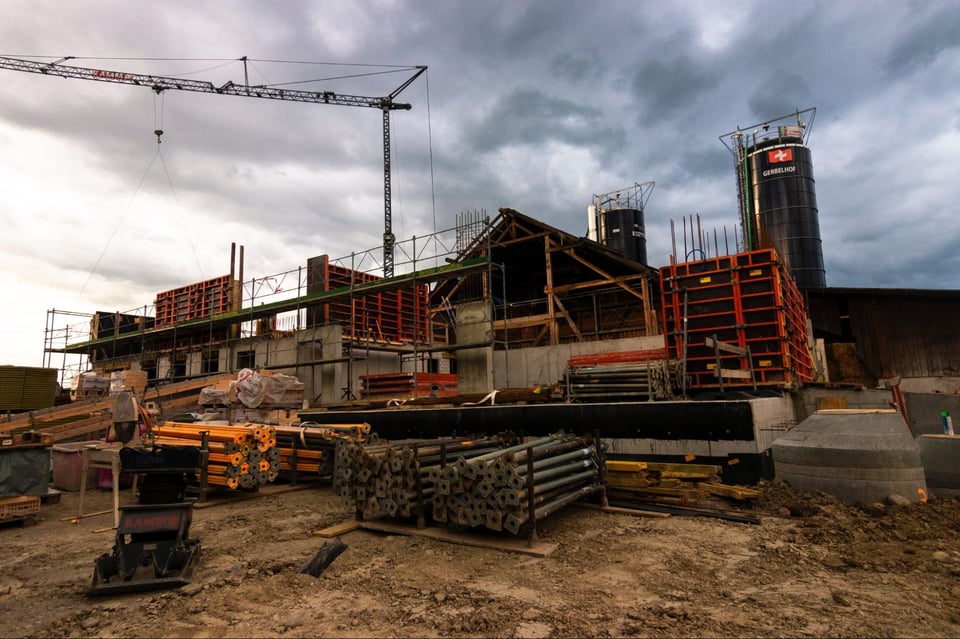Marketing professionals in the building materials industry shouldn’t operate on guesswork. A big part of success is knowing how every part of your online presence is performing, so you can optimize as needed.
That includes keeping tabs on one of the most important parts of your website: the dealer locator page. This is where customers make real-life connections with your brand by finding a retailer they can buy your products from. The return on investment from your locator should be high and increasing at all times!
In a HubSpot report, only 35% of marketers saw understanding the ROI of their campaigns as “Very Important” or “Extremely Important.” This is a mistake. Not knowing the ROI of any online marketing tactic, especially your dealer locator, equates to leaving a lot of money on the table.
Here, we’ll break down the key metrics needed to calculate your locator’s ROI. Pay attention to these figures, make measuring and optimizing them a part of your process, and you’ll quickly enhance your locator’s impact on your building product sales.
1. Traffic Value
The first metric to look at is your traffic. That is, the actual people coming to your website and looking to buy your products.
Specifically, you need to know how many of them are not just landing on your locator page. After all, that’s where they’ll end up if they’re serious about making a purchase.
From here, to calculate your traffic value, you’ll need to connect local search-optimized pages to your locator and assess the value of the keywords those pages are ranking for.
The Importance of Local SEO Pages
If your listings point to local SEO profile pages for each dealer, you’re well positioned to attract organic search traffic to your locator.
For example, if you’re a siding manufacturer who has locations or dealers in Houston, TX, you’ll ideally have individual dealer profile pages (or a general page talking about your dealers in Houston) that rank highly in Google search results for queries like “siding retailers houston tx”.
Why does this matter? Searchers behind queries like those are likely to want and need your products, or else they wouldn’t be looking for a nearby dealer.
According to 12 years of data gathered by First Page Sage, the manufacturing industry as a whole has seen a whopping 813% average ROI from SEO activities over a 3-year span. This shows how huge SEO is in terms of the positive financial impact it can have on your business.
By having helpful local SEO pages — and a dealer locator software that enables you to build as many as possible for local rankings — you’ll save tons of money in advertising costs and get many more high-intent prospects to your site, practically for free.
Hint: With the right dealer locator software, you can create tons of traffic-driving local SEO profile pages that can ultimately help boost your ROI. Bullseye Locations is the #1 software tool to help building material manufacturers achieve your goals.
Determining Traffic Value
To find out how much the search traffic is worth in terms of monetary value, compare the number of visitors you get to your page to the cost of bringing those people to your site through paid search marketing.

Let’s say you use a tool like Ahrefs to discover the cost-per-click (CPC) of a search term like “siding contractors houston”, and you find that marketers are paying $10 per click to run Google ads around that search term. Your search-optimized pages bring in 50 locator visits every month through organic Google searches.
In this scenario, your traffic value is $500. That’s roughly what you could expect to spend if you’re paid to acquire your 50 site visits through Google Ads.
You can determine your locator’s real-world traffic value by doing the following:
- Use Google Analytics to find out your dealer locator’s total traffic numbers.
- Calculate the average CPC of the keywords those site visitors are using to land on your locator’s local pages.
- Multiply your traffic number by your average CPC.
The resulting dollar amount tells you what your search traffic is worth. However, that’s just the start of determining your locator’s ROI.
2. Cost Per Lead and Lead Value
Not all of your locator visitors are going to turn into leads. Some will, however, and you’ll want to understand the overall cost they represent, as well as their value to your business.
Having the Right Software
To start calculating your cost per lead (CPL) and lead value, you’ll need two things:
- Proper conversion tracking inside Google Analytics.
- A dealer locator that actually helps to generate leads.
Most dealer locator solutions don’t capture lead information. It just isn’t what they were designed to do. Bullseye is different.
Bullseye is the #1 dealer locator-building platform for building materials manufacturers that are serious about their marketing. A Bullseye-built locator will allow you to convert traffic into leads by capturing their info in a popup form when submitting an inquiry to a nearby dealer.
If you have Google Analytics set up, and a Bullseye locator powering your lead gen, you’re ready for the next step.
Gathering CPL Data
You’ll want to look at the aggregate costs of your advertising channels, whether they be Google Ads, social media ads via channels such as Facebook or LinkedIn, remarketing costs, or other outlets.
In particular, you need to figure out the number of leads you’re getting from each of those sources that are being sent to your locator page. These are not just site visitors, but prospects who have raised their hand to indicate possible buying intent by submitting an inquiry through your locator.
Your CPL from each channel is the cost of advertising divided by the number of leads.
Most digital advertising platforms come with built-in reporting that tracks your lead costs. For offline methods like brochures, you’ll likely have to rely on a manual calculation of your cost per lead.
Simply take the average CPL across all your marketing channels to determine the dollar amount your business spends to acquire a lead.
Calculating Your Locator Lead Value
Multiply the average CPL you’ve calculated in the last step by the number of leads you’ve collected through your locator page.
For example:
100 leads from your dealer locator x $50 cost per lead = $5,000
In this case, the $5,000 figure you’re left with is the total worth of the leads your locator has generated for your business!
Imagine, however, a scenario in which you’ve minimized your advertising costs by not spending on ads at all, and you’re bringing in lots of interested prospects from SEO. The picture for both your cost per lead and locator lead value gets even brighter!
How? If your locator software can dynamically create as many highly-optimized, engaging local pages as needed, like Bullseye does, you can attract thousands of site visitors at practically no added cost.
All things considered, the faster your lead count grows via SEO, the faster your cost per lead drops to practically nothing…and the sooner your locator’s lead value skyrockets.
3. Cost Per Sale and Locator ROI
Your cost per sale (CPS) is the dollar amount your company spends to produce one meaningful sale. This is an important figure as you get closer to measuring your locator’s ultimate ROI.
To start, you need to track how many sales happen within a given period, and from a given number of leads.
The best way to do this is with a premium customer relationship management (CRM) tool. According to Marketo, 50% of leads in any given business system aren’t immediately ready to buy, which is where lead nurturing comes in. A good CRM can track your sales reps’ lead nurturing efforts, and generally help you oversee the journey to the sale, and any costs involved.
Bullseye is a valuable part of the equation here. It natively supports integrations with leading enterprise-level CRM tools like Salesforce and HubSpot. That means for every lead that comes in through your dealer locator page, you can follow its progress through your sales funnel with precision — including conversations with your dealer and your internal sales team — and see whether it ultimately converts to a sale.

Next, review the number of closed sales in your CRM directly resulting from leads generated by your locator. Figure out the overall costs to produce those sales, and work out the average cost per sale (CPS) for your defined period of time, whether it’s a month, a quarter, or year.
Finally, you can calculate your locator’s return on investment (ROI) as a percentage:
(Total revenue resulting from your locator – Costs of producing sales) / Costs of producing sales x 100
For example, if you’ve generated $25,000 in revenue resulting from 10 locator-driven sales, and your costs of producing those 10 sales are minimal (let’s say $2,500 was the cost of your team’s follow-up efforts, though this number could be far less for highly-motivated leads), you’d have a dealer locator ROI of 90%.
While these aren’t real-world figures, they do demonstrate the potential of an optimized dealer locator that generates quality leads. By leveraging that part of your site to make a solid impression on potential customers, connect them with great local dealers, and monitor buyer journeys, you can quickly maximize the overall ROI of your web presence.
For Building Materials Manufacturers, A High-ROI Online Presence Starts with the Right Locator Software
Your dealer locator can be an impressive contributor to your bottom line. It helps to have a locator-building software with a few powerful capabilities.
It should be able to:
- Build tons of search-optimized local profile pages to represent each dealer or city your brand has a presence in, as this can drastically reduce your traffic acquisition costs
- Allow you to generate leads from that traffic, rather than allowing potential customers to slip away without a trace once they leave your site and drive over to a dealer
- Integrate with premium CRM software, which can help you track the journey of each lead from prospect to buyer
This can seem like a tall order for a dealer locator tool. Bullseye does all three with ease.
Bullseye enables you to calculate and improve the ROI of your locator pages over time. That makes it an extremely valuable, revenue-building asset to your organization: one that will only keep growing in value as your business grows.
In the dark about how much profit your current locator setup is producing? Want to realize the high-ROI promise of Bullseye for your building materials brand? Schedule a free assessment of your current locator today to learn about the possibilities!




